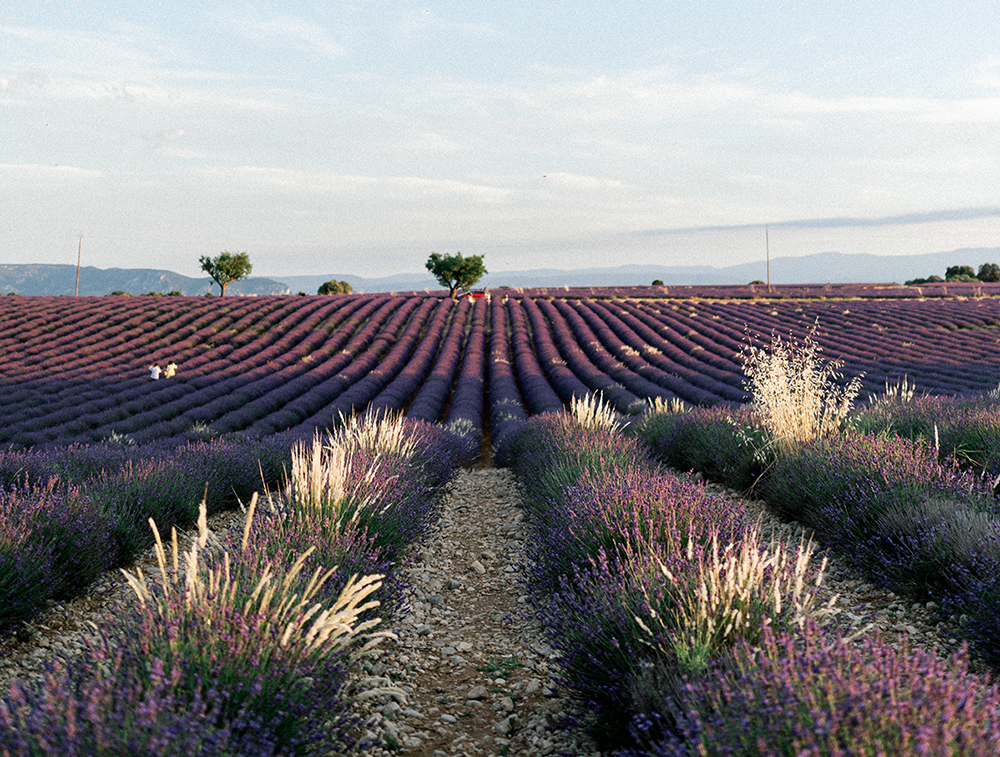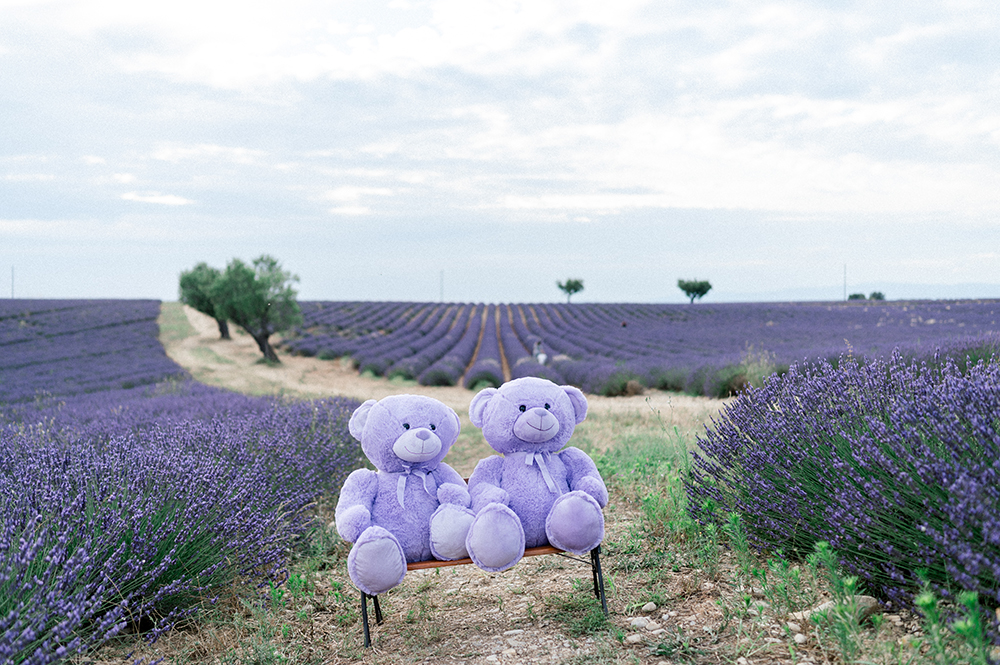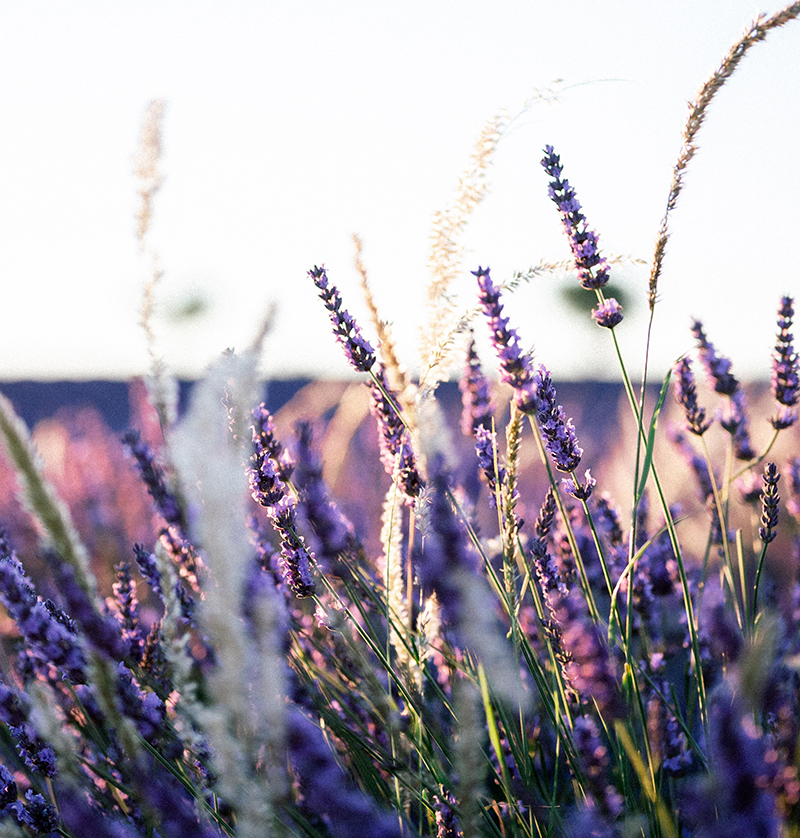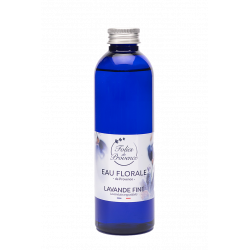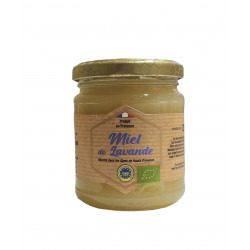Lavender fields bloom in July, bringing an explosion of color and fragrance to the Provencal landscape.
All lavenders are melliferous plants, i.e. highly sought-after by bees.
Lavender was already used by the Romans to preserve linen and perfume baths. In Provence, lavender was used in the Middle Ages to make perfumes and medicines, but it was not until the 19th century that its cultivation began to flourish.
Different types of lavender :
- Fine lavender or true lavender (Lavandula augustifolia). It grows naturally in the garrigue of Provence at altitudes of 800 to 1,400 meters. It is a shrub about 50 cm high, with a single flower spike per stem.
- Lavender aspic (Lavandula latifolia). Larger, with broader leaves and several short spikes per stem. Found at lower altitudes, it blooms earlier, starting in June.
- Lavandin (Lavandula latifolia X officinalis). This is a cross between the two previous species. It cannot reproduce naturally and must be cut. Growing at altitudes of between 200 and 800 meters, it is 60 to 80 cm high and its spikes are very dense, unlike those of fine lavender. It is the most common species in southern France (80% of cultivated areas).
Focus on the differences between lavender and lavandin:
These two plants from the Lamiaceae family are grown in the same way.
Despite their visual and botanical proximity, lavandin, which is taller and more branched, has a stronger, more camphoraceous scent, whereas the single spikes of true lavender give off a more floral, more delicate fragrance.
Lavandin is a natural hybrid resulting from a cross between two wild species, "fine" lavender and "Aspic" lavender. It generally flowers 15 days after lavender.
Tip for recognizing a field of lavandin: because its flowers are cloned, lavandin is uniform in color with large, regular clumps, whereas a field of lavender offers shades of blue-violet.
True lavender, with its more subtle scent, provides a high-quality essential oil.
On the other hand, both lavender and lavandin can benefit from an organic label.
Folies de Provence produces its lavender in Provence:
All our lavender flowers come from Provence (France). From manufacturing to the finished product, everything is designed in our beautiful region.
 A professional event? Personalize your gifts!
A professional event? Personalize your gifts!
 Folies de Provence at the Florence Christmas Market: an unmissable event
Folies de Provence at the Florence Christmas Market: an unmissable event
 Folies de Provence rallies for Pink October
Folies de Provence rallies for Pink October
 Which pillow mist to choose for soft and peaceful nights?
Which pillow mist to choose for soft and peaceful nights?
 White lavender, this little-known variety
White lavender, this little-known variety
 Lavender Festival: between tradition and discovery
Lavender Festival: between tradition and discovery
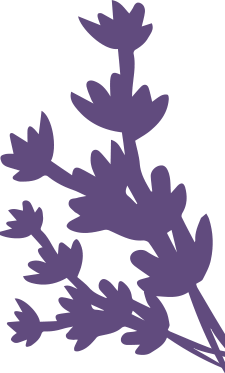

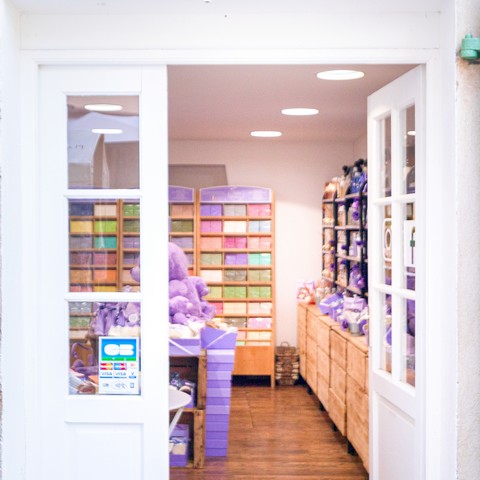
 Cookie preferences
Cookie preferences




